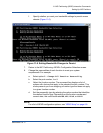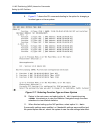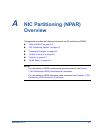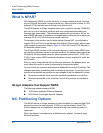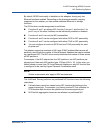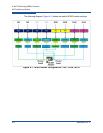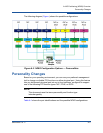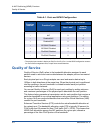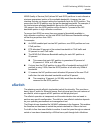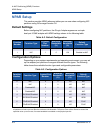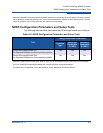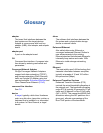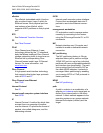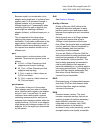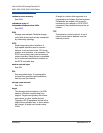
A–NIC Partitioning (NPAR) Overview
eSwitch
SN0054667-00 C A-7
NPAR Quality of Service (QoS) allows NIC and iSCSI partitions to each allocate a
minimum guaranteed portion of the available bandwidth. However, the user
interface tools do not support setting the bandwidth limits for iSCSI partition. This
means that the iSCSI partition may not get the desired bandwidth. For example, if
the total minimum allocated bandwidth across the NIC partitions equals
100 percent, then the iSCSI partition will be limited to 1 percent of the NIC
bandwidth portion in high-utilization conditions.
To ensure that iSCSI has more than one percent of bandwidth available in
high-utilization conditions, set the total NPAR QoS Minimum Bandwidth settings
so that they equal less than 100%.
For example:
An NPAR enabled port has two NIC partitions, one iSCSI partition and one
FCoE partition.
ETS allocates 50 percent of the network bandwidth to FCoE traffic and
50 percent to non-FCoE traffic.
The NPAR QoS Minimum Bandwidth setting for each NIC partition is
50 percent.
This means that each NIC partition is guaranteed 50 percent of
50 percent of 10Gb, or 2.5Gb each.
If at any time the FCoE partition is using 5Gb of bandwidth and each NIC
partition is using 2.5Gb, then the iSCSI partition is left with only 50Mb of
bandwidth.
If, however, the NIC partitions each allocated 45 percent of the non-FCoE
traffic then the total allocated bandwidth would be 90 percent.
The remaining 10 percent (or 500 Mb) would then be effectively
reserved for the iSCSi partition.
eSwitch
The adapters provide eSwitch (embedded switch) functionality. This provides a
basic Layer-2 switch for Ethernet frames. Each physical port has one instance of
an eSwitch, which supports all NIC partitions on that physical port.
The eSwitch operation is transparent and the administrator does not need to
perform any specific configuration. The ability to view eSwitch statistics depends
on your operating environment and management tool.
The QLogic drivers download the VM MAC addresses to the firmware. This enables
the firmware and hardware to switch the packets destined for VMs on the host.
For traffic to flow from one eSwitch to another it must first pass through an external
switch or have been forwarded by a VM that has a path through both eSwitches.



